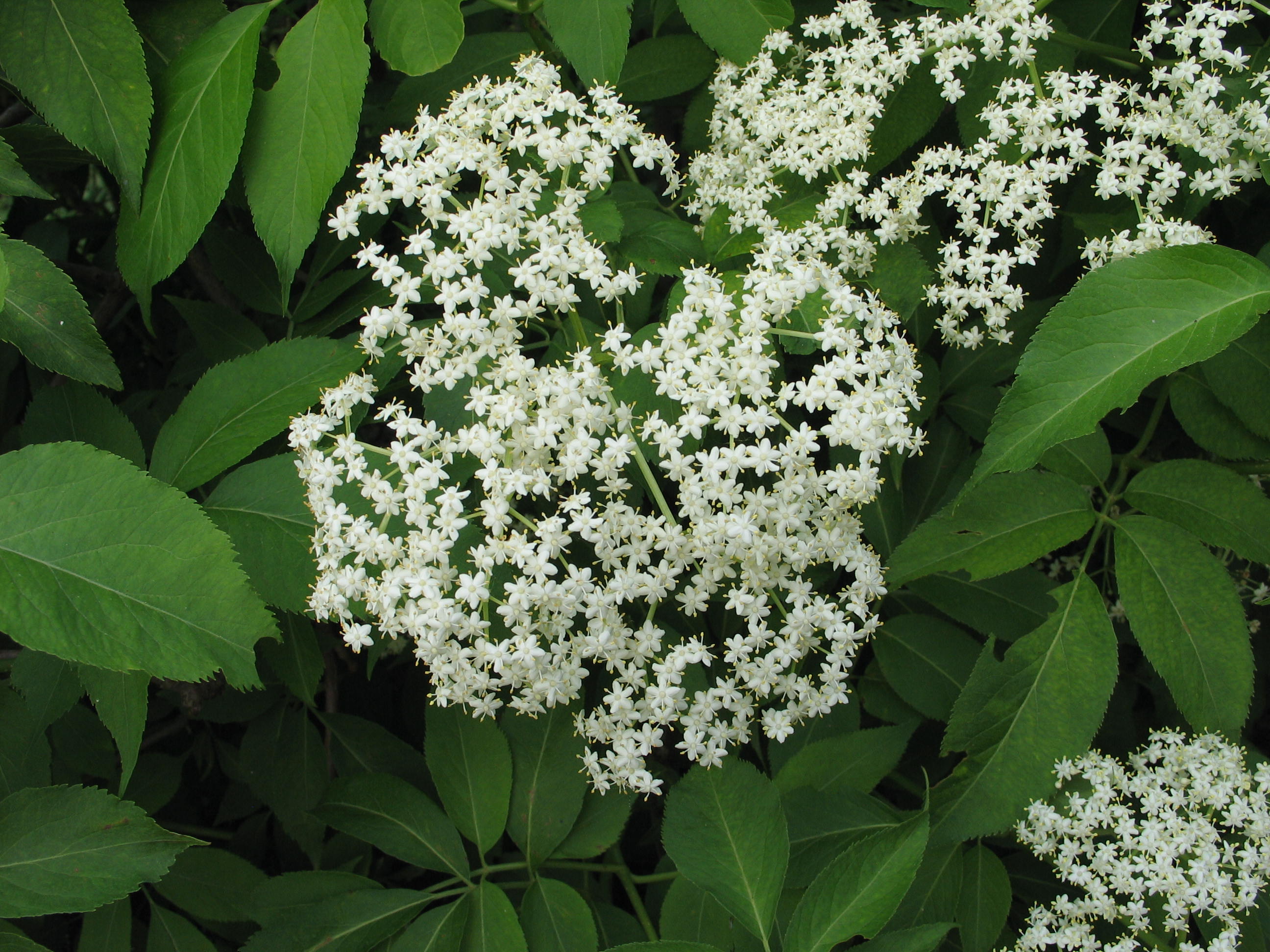A well-designed garden has many different forms, colors, heights, bloom times and textures. Plants are integrated in ever-changing combinations that should be appealing to us and the wildlife we are trying to attract. Obviously, pollinators depend on diversity of plants and being able to find the food they need. Shrubs are an important nectar source for many different pollinators, particularly for bees. By including just a few of these in your own landscape, you can have a beautiful and productive garden that makes a difference in their survival. Here is a list of shrubs for bees to feast upon.
Small Deciduous Shrubs (1-3 feet tall)
Black Chokeberry–Aronia melanocarpa-The tiny white blooms of this ornamental shrub attract many different types of bees. The black fruit is a bonus to be eaten fresh or left for wildlife. Look for varieties like ‘Autumn Magic’, ‘Iroquois Beauty’ or ‘Viking’ to add to your garden.
Western Sand Cherry–Prunus besseyi ‘Pawnee Buttes’-This wonderful, easy to grow landscape plant has an abundance of sweetly scented flowers in the spring followed by black cherries in the summer. The glossy green leaves turn shades of red and purple in the fall. It only grows to 18 inches tall by 4-6 feet in spread making it a fantastic ground cover.
Coralberry–Symphoricarpos sp.-This is a shrub that is grown for its ornamental berries. However, the tiny blooms are gladly used by bees. The summer’s flowers swell into pinkish white pearls along arching stems. The fruit is persistent well into winter. “Candy™’ or ‘Galaxy™’ are forms with great fruit clusters.
Lead Plant–Amorpha canescens-This is a great butterfly bush alternative. The purple flower spikes in late spring atop the silvery gray foliage are extremely attractive. Bees cover these plants while blooming. It is a native wildflower that thrives in a sunny spot.
Medium to Large Deciduous Shrubs (4-10+ feet tall)
Buttonbush–Cephalanthus occidentalis-The unusual, fragrant flower balls of this native shrub are magnets to a host of pollinators. I have seen up to two dozen swallowtail butterflies on one plant when in bloom. ‘Sugar Shack®’ is a shorter form that works well in the landscape.
Elderberry–Sambucus canadensis-As you drive the highways in summer, this shrub is everywhere. The creamy white blooms pop out of the landscape especially against the glossy green foliage. These flat topped clusters of flowers make great landing pads for bees. The fruit is tasty and very high in antioxidants. ‘Adams’ and ‘York’ are native forms selected for their larger fruit. Other non-native forms like ‘Black Lace’ and ‘Lemony Lace’ are more refined alternatives for the landscape.
Spicebush–Lindera benzoin-We have had success growing this as an understory shrub. The tiny yellow flowers attract bees and the leaves have a spicy smell when crushed. Plants develop a nice yellow fall color.
Viburnums-There are too many of these shrubs to mention, but I will highlight our native to Kansas varieties, which have beautiful white flowers in the spring followed by clusters of purplish fruit that develops later in the summer. Viburnum prunifolium has smaller oval leaves that develop reddish-purple fall color. Viburnum rufidulum has shiny leaves that turn burgundy-purple fall color. Each of these shrubs can grow to 12 feet tall.
Certainly, there are other shrubs for the landscape such as Beautyberry-Callicarpa americana, sumac (Rhus sp.), Roughleaf Dogwood-Cornus drummondii, American plum-Prunus virginiana, Clover Currant-Ribes odoratum, and serviceberry (Amelanchier sp.) that deserve more use in landscapes. Many of these shrubs have been pushed aside for ornamental varieties that are nice to look at, but offer nothing to wildlife because the flowers are sterile. By strategically choosing plants that are both beautiful and alluring to bees and other wildlife, your garden will become a haven for pollinators.





